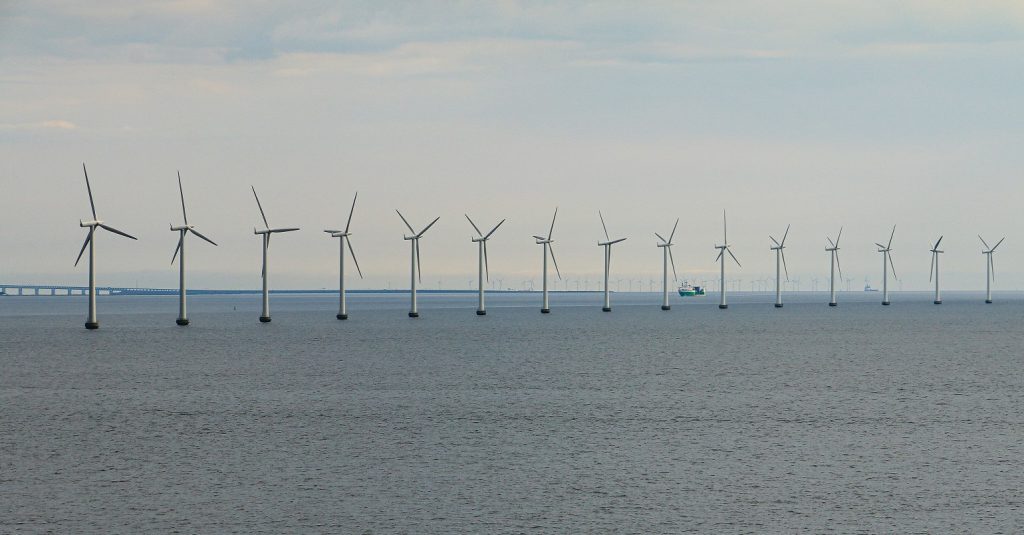What’s gone wrong for offshore wind in the UK?

There are various responses to disaster. Last week, the government announced the UK contracts for difference auction which would contract any offshore wind production, equivalent to a third of the capacity of the equivalent a year ago. The result of the auction will cost UK energy consumers some £800 million, endanger government energy climate, security and economic objectives as well as cost thousands of jobs. Perhaps only the Munich Agreement exists a more clear-cut policy failure.
The UK government, however, declared victory – a claim that even the best propagandists would struggle to sell. It did, however, give us one of Ed Miliband’s best parliamentary responses.
The targets
Recent difficulties in the offshore wind sector are remarkable, as it is hard to find a sector (outside house building) that enjoys such a broad political support. From 13.6 GWH installed capacity today, the Tory government is targeting 50 GWHs by 2030, a target seen as inadequate by Labour (52 GWHs) and Lib Dems (48 GWHs), while the Greens suggest 60 GWHs. Even the lowest of these would require record breaking rates of installation of about 7 GWHs every year to hit the target.
Moreover, it is a sector that appears to have solid foundations – literally in the case of large pylons anchored to the bottom of the North Sea. This body of water provides tailor made conditions for the industry to flourish: relatively shallow, with geologically stable bedrock, windy but mostly free of hurricanes, next to large energy consuming markets and a hydrocarbon sector that spent decades working out how to affix things to the sea floor.
The UK government responded in one Ed Davey’s few achievements while a government minister. He oversaw the implementation of the contracts for difference (CFD) auction. These auctions are where the government agrees an amount of power, or an amount of money that will be spent procuring power firms which then bid to deliver it at fixed prices. The government agrees they will always receive these strike prices, if their power is needed by the grid. This gave price certainty to renewable producers, who otherwise have to make complex guesses about the likely price of power when they are going to be able to generate and created a mechanism to drive down the price of offshore wind. Offshore wind prices duly fell from £175 per MWH to £37.5 per MWH (2012 prices), inside a decade – a good 20% of last years’ wholesale price and half the CFD offered in Hinkley Point C nuclear plant.
The previous auction secured a record 10.7 GWHs of capacity, despite effective exclusions of English and Welsh onshore wind.
All good news for one of the UK’s few industrial success stories. Well, the Tories could not have that.
Problems start to appear
The dramatic and seemingly unstoppable fall in offshore wind prices created its own momentum. As prices continued to make a mockery of forecasts there came to be an assumption they would fall continually. Firms bid in at low prices to secure the contracts and to establish themselves in the market.
It turns out that there may have been limits. The picture remains murky but a few things seem to have caused costs to spike. In what energy consultancy Wood Mac called a perfect storm wiping out wind profits:
- There may have been a fall-off in learning rates (price falls resulting in firms learning how to do something better)
- A rise in labour costs hitting all industries.
- A rise in materials costs that Carbon Brief estimates comprises double figure increases for most metallic components
- A rise in energy prices hitting all industries
- Growing pains (Siemens energy has reported faults on turbines forcing write downs and the firm’s value to fall 37%). With 800GWH targeted around the world, production needs to scale up at impossibly rapid levels and this is costly.
- Rising interest rates. We do not need to pay for wind so pretty much the entire cost of a windfarm is large initial capital outlay. Firms normally borrow to secure this, expecting to recoup it once the project starts generating. This meant the industry was hit hard by the 10 fold rise in borrowing costs.
This suggested problems in the contracts, but the policy response made things far worse.
The Tories support the offshore industry in the same way they support their leaders
When seeing the large windfalls enjoyed by the renewable and nuclear industry at the height of the energy price spike the government slapped them with a windfall tax. This was at a higher level and less full of holes than the one reluctantly offered to the offshore oil sector. They followed this up by capping the new CFD auction with a ceiling price of £44 per MWH ignoring the problems hitting the sector. EIU estimates no offshore wind firms will be able to enter the auction at the current price.
However, there is some big damage already inflected. Looming large here is Brexit, cutting an international industry off from a wide labour and goods pool. Moreover, it has left the UK outside the EU carbon market and incoming carbon border tax which would have protected it from imports of carbon intensive steel. However, also the government’s refusal to answer the money being poured into the sector by the Chinese and USA governments. Both the EU and Japan have responded to the passage of the USA inflation reduction act by promising more funding. The UK has if anything seen the game has changed and scaled back it’s offer.
Meanwhile long running problems in the sector remain unaddressed. The UK connection rates have delays of over a decade and a long running electricity system review injects unneeded uncertainty. Wind would work well with storage, but there is little support for storage. Wind would work well with Green Hydrogen, but despite much rhetoric confirmed UK plans remain nascent.
The results
Faced with deteriorating conditions, Vattenfall walked away from it’s CFD and Siemens energy admitted 4.5bn Euro losses, while a leading North Sea wind firm saw it’s stock fall 25% and moved into solar.
The CFD auction, secured no onshore wind. This led to 66% drop in overall capacity secured. Indeed there is an argument that this flatters the government, as much of the capacity secured was Scottish onshore wind, only possible as the Scottish government rejected the madness of the UK onshore wind ban. While welcome news to the people of Scotland, due to the delayed constructions of interconnectors with England this will be of limited use to the wider country.
The next largest tech pot is solar PV, often in 49MW facilities – a figure conveniently below England’s equally self defeating planning limit.
The sole good news for any technology pot came for tidal and geothermal. The government hailed this as a success, ignoring that they spent most of the last two decades doing their best to destroy both sectors.
Following the governments declaration of victory in a typical denunciation Green Party MP Caroline Lucas congratulated net zero minister Graham Stuart for “turning complacency and chutzpah into a new art form”. The unfortunate minster sent out to defend this decision replied that the Green MP should be welcoming that 77GWs (almost the amount of capacity needed) was in the pipeline. A more reflective minister might have tried to answer why the government seems to determined to block the pipeline.
PS. We hope you enjoyed this article. Bright Green has got big plans for the future to publish many more articles like this. You can help make that happen. Please donate to Bright Green now donate to Bright Green now.
Image credit: Øyvind Holmstad – Creative Commons




Sam, thanks for giving such a clear summary of this situation.